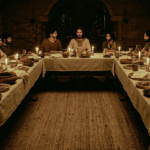Sue Woolfe, Fourth Estate
I’ve read most of Sue Woolfe’s novels and non-fiction works and admired them.
She researches thoroughly, expresses complex matters deftly and weaves stories that are worth taking the time to unravel.
Sadly, The Oldest Song in the World, didn’t quite cut it for me. The writing was strained, the characters implausible and the story forced.
To give Woolfe credit, any novel that tries to explore the relationship between white and black Australia is going to be up against it. A lot of legwork and understanding has to be done and poured into the crucible so that the fiction can be shaped very carefully from complicated and deeply felt ideas.
Characterisation and dialogue will always be crucial in this endeavour and the slightest false move can bring a work undone.
Woolfe spent a year-and-a-half in a remote Aboriginal community observing culture and community, and the main idea for the novel came to her travelling back from Wadeye with two linguists, one of whom was a song specialist.
Kate, the novel’s protagonist, is sent by her university lecturer to a remote Indigenous community to record what is believed to be the oldest song in the world.
She is a lacklustre linguistics student who realises that a leading white figure in the community is someone she once loved during her childhood. He’s now an arrogant and selfish man who obstructs her in achieving her task. For some reason she still feels attracted to him.
Kate is also desperate to discover if he knows more about how her mother might have died — a death shrouded in a mystery that relates to the man’s mother — but she can’t pluck up the courage to do so.
The plot consists of a series of everyday and dramatic events that lead to the point when she confronts him. It’s then that he also finally reveals exactly where she needs to go to record the song.
Unfortunately, Kate comes across as a capricious flake who bends easily to the will of others, especially men. Other characters are even less well drawn.
In the absence any character with whom we genuinely want to travel the journey, the book drags. This is compounded by the linkages between key moments being too weak to hold the novel effectively together.
There are some pithy comments about language and community in the mix and I really liked the river setting of Kate’s childhood reminiscence. This was a place I wanted to visit and didn’t mind being in (courtesy of Kate’s headspace). Painful things happened here and these incidents and their setting rang true for me.
This ambitious book will offer some readers insights into Australia’s remote Indigenous communities and the assortment of bureaucrats, do-gooders and cowboys who have roamed them often with questionable agendas and variable results.
Marjorie Lewis-Jones












